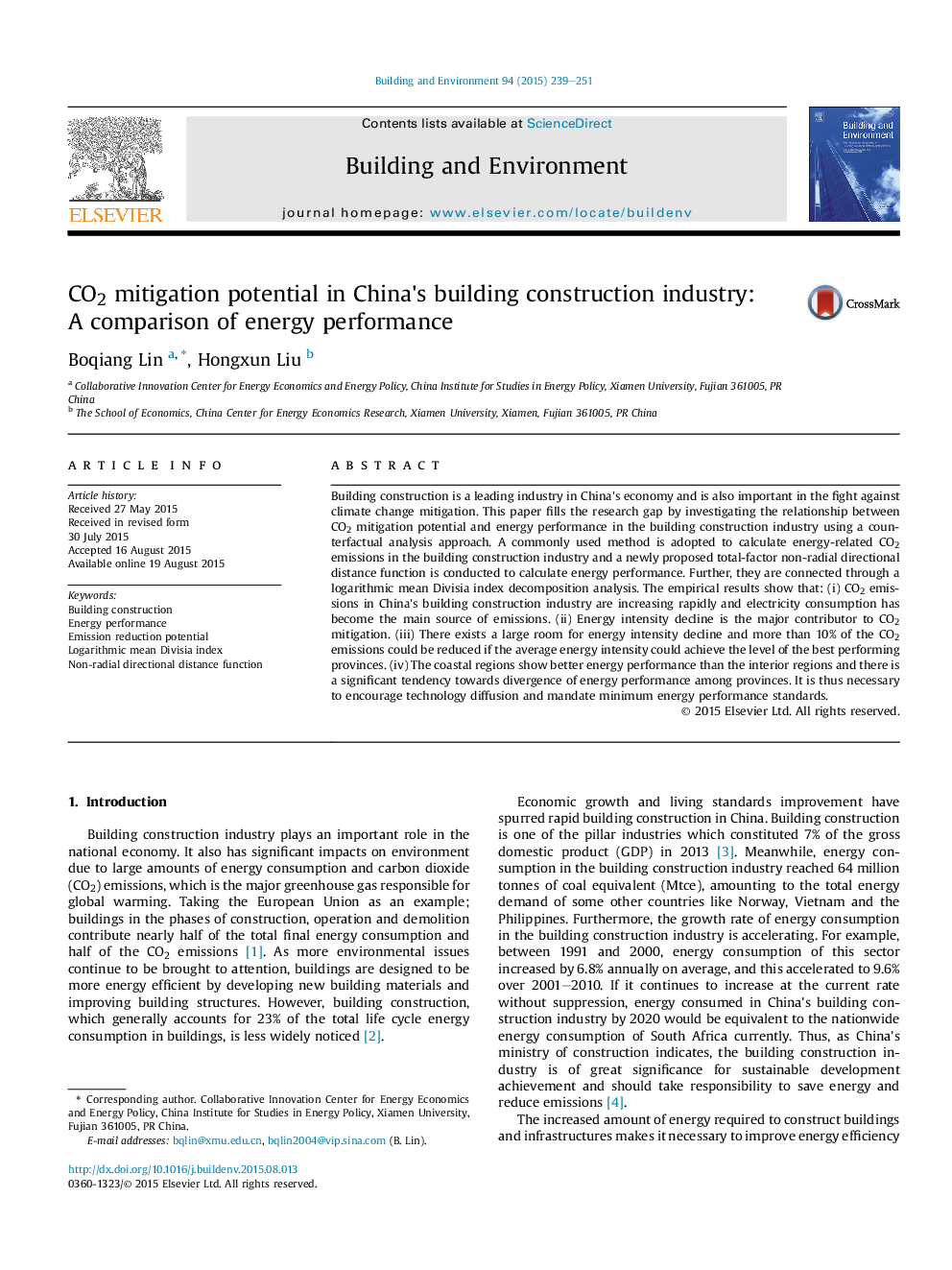| Article ID | Journal | Published Year | Pages | File Type |
|---|---|---|---|---|
| 247809 | Building and Environment | 2015 | 13 Pages |
•CO2 emissions in China's building construction industry are calculated.•Impact of energy intensity on CO2 emissions are quantified.•Target energy intensities are calculated by investigating energy performance.•CO2 mitigation potential is figured out through counterfactual analysis.•Regional disparities and divergence trends are presented and statistically tested.
Building construction is a leading industry in China's economy and is also important in the fight against climate change mitigation. This paper fills the research gap by investigating the relationship between CO2 mitigation potential and energy performance in the building construction industry using a counterfactual analysis approach. A commonly used method is adopted to calculate energy-related CO2 emissions in the building construction industry and a newly proposed total-factor non-radial directional distance function is conducted to calculate energy performance. Further, they are connected through a logarithmic mean Divisia index decomposition analysis. The empirical results show that: (i) CO2 emissions in China's building construction industry are increasing rapidly and electricity consumption has become the main source of emissions. (ii) Energy intensity decline is the major contributor to CO2 mitigation. (iii) There exists a large room for energy intensity decline and more than 10% of the CO2 emissions could be reduced if the average energy intensity could achieve the level of the best performing provinces. (iv) The coastal regions show better energy performance than the interior regions and there is a significant tendency towards divergence of energy performance among provinces. It is thus necessary to encourage technology diffusion and mandate minimum energy performance standards.
